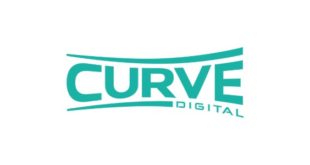It’s an old adage and one that’s normally almost meaningless in a commercial environment. But, paradoxically, it is being proven true for some of the most profitable games companies: giving away your content can be a great way of generating surprisingly healthy revenues.
For many, free is at worst pure anathema, or at best a marketing ploy that comes off your bottom line. For the music, film and television industries, free is the devil incarnate, and as they drag their heads out of the sand, they continue to lose arms and legs to piracy. While they procrastinated, consumer behaviour changed irreversibly, and legal threats have barely stemmed the flow. But more recently, cannier companies have tested ‘new’ commercial models. For example, Nokia buys a year of music rights from music publishers and bundles it into the snappily-named ‘Comes With Music’ service so consumers can listen for free. Eventually it will cost them a little, but by then the logic holds they will be hooked and see the value. Laid bare, CWM is the kind of digital subscription service plus free trial period that games have used for over a decade.
Fears about piracy aside, games companies have been exploiting ‘free’ for ages, particularly in the online space. Classic subscriptions with free trial periods are the bread and butter of many of the largest online games companies. This model would be boring if it weren’t so profitable. Try before you buy is the staple of retail downloads in casual and core spheres. Despite falling expenditure, advertising in casual games is the primary way companies like Spil and Miniclip monetise their vast audiences. On a smaller scale, advergaming gives brands exposure to millions of players by seeding game sites with free Flash products.
FREE’S THE MAGIC NUMBER
Free can be more than a marketing vehicle for premium content or services, and becomes really interesting – and profitable – when free becomes an integral part of the game service. Examples abound, but perhaps the best known are the permanently free play areas of Runescape or Dofus, which are designed to expose players to all the cool stuff they could get if they subscribed. NeoEdge and WildTangent have proved advertising’s potential to subsidise free casual game downloads and generate more revenue than digital retail. More commercially aggressive are casual MMOs, such as those from Aeria or Gameforge, that offer vast free play areas where gameplay progression is significantly enhanced by purchasing items and upgrades, or even surprisingly short-term services. Another fascinating example is sponsorship from 20th Century Fox brokered by WildTangent that unlocked new characters and quests for free in AdventureQuest.
Another is the rare trophies earned for free in-game that are auctioned in primary markets such as those operated by SGN in Facebook, or used as collectible game counters in other games (such as cafe.com). The use of gifting – premium items purchased by one person with real money and given for free to friends – in social network games is another. Perhaps the most outlandish is the purchase of annuities in China’s ZT Online, which pay out virtual currency as players reach level thresholds in theoretically free games. The trick here is that level progression in this game requires such significant additional expenditure via microtransactions that the operator usually comes out on top.
FOR YOUR CONSIDERATION
“But it’s not really free is it?,” I hear you say – how much of Sony’s Free Realms, for instance, is actually free? A quick peek reveals surprising amounts, from 10 per cent to 75 per cent in Free Realms’ case. Such high percentages of loss-leading development and service expenditure necessitate very careful consideration about the dividing line between free and premium content, with particular emphasis on how to encourage players towards premium content. These deliberations involve data-crunching and experimentation, tricky decisions about premium currencies, community drivers and assessments of the pervasiveness of upselling mechanisms. These are complex decisions for even the most experienced operators, particularly because redrawing the line can be difficult post-launch.
The critical difference between online games and other media in this regard is that these companies can usually define what is free and what is not by controlling access to their servers, whereas music publishers – and traditional games publishers for that matter – can only fight a rearguard action against piracy, and find other ways to entice, cajole or threaten players to respect their IP rights.
So how much money can be made from ‘free’? As you may expect, there’s a rising scale of average revenue per paying user per month, but the most profitable companies we track can generate over £15 in ARPU per paying user per month from ‘freemium’ content, which is saying something when hundreds of thousands of paying users are playing. The result is that we expect Europe to boast its first $100m+ revenue freemium companies in 2009.
So the adage may be true – not only are the best things in life free, some of the most profitable games are free too.

 MCV/DEVELOP News, events, research and jobs from the games industry
MCV/DEVELOP News, events, research and jobs from the games industry



